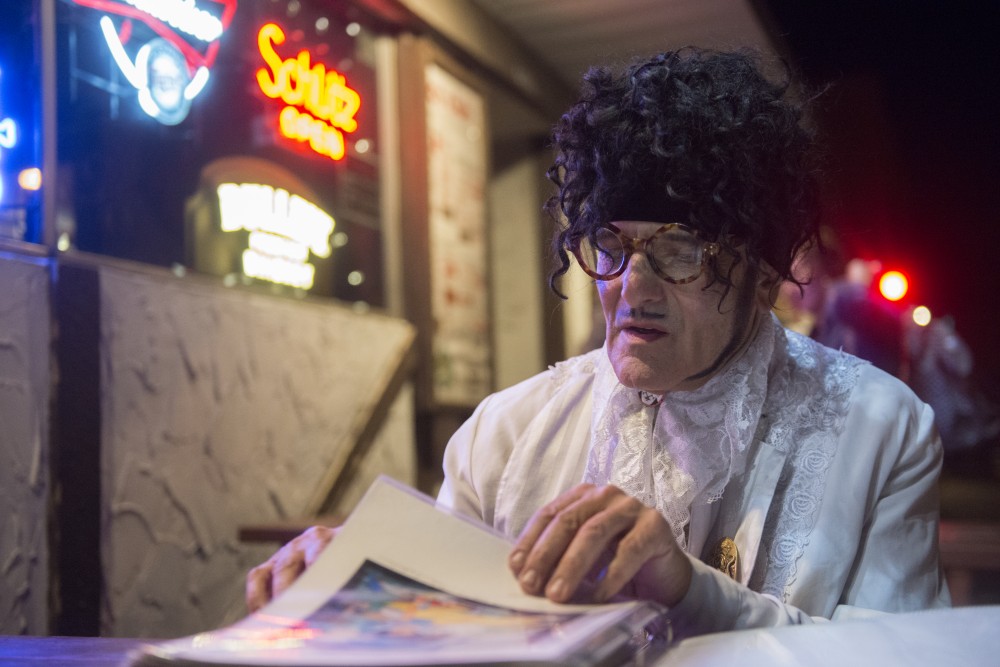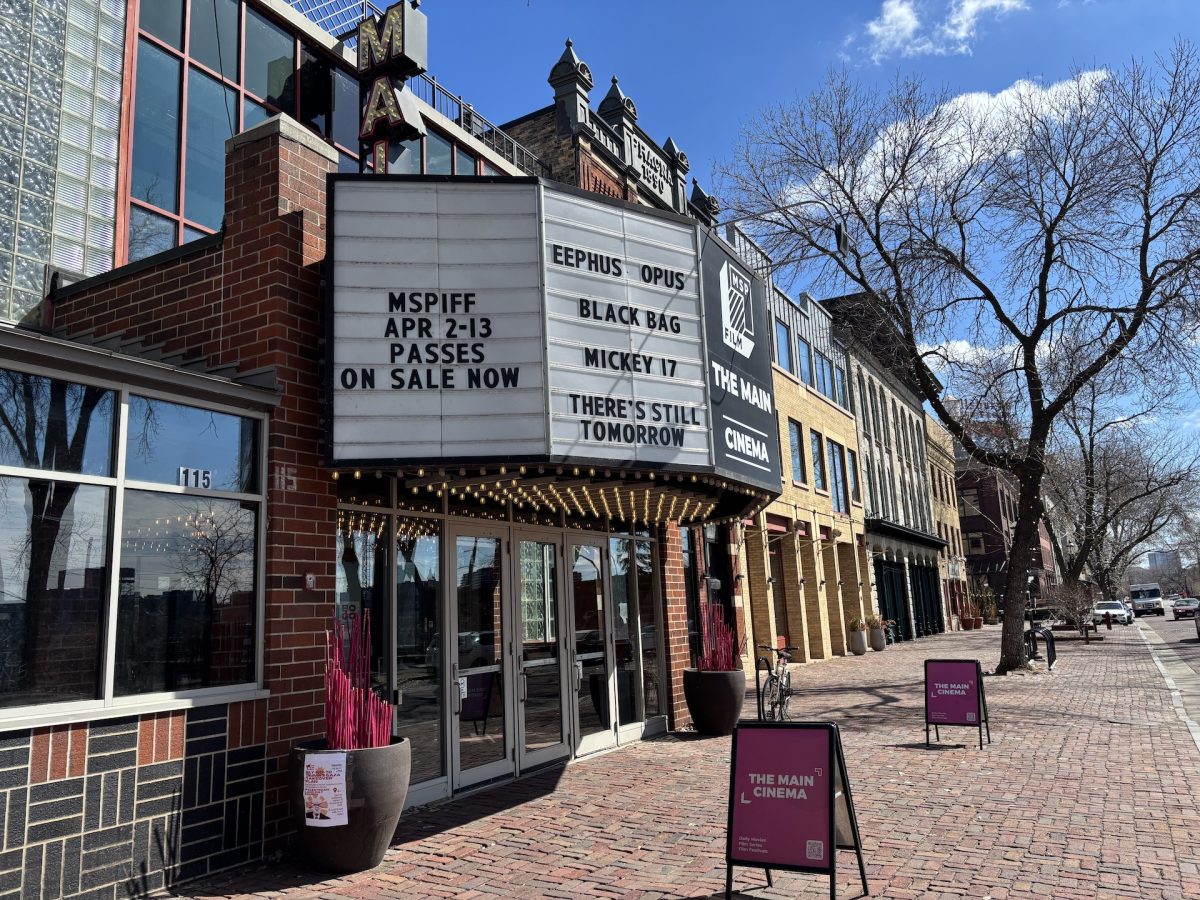You’ve probably seen him around town, wearing a white suit in the summer and a black one in the winter. His name is Scott Seekins.
Over the years, Seekins has become an icon in the Twin Cities. His unchanging style and paintings (which often feature him in romantic dialogue with Britney Spears) have generated a cult following. There is even a website and a Twitter page dedicated to tracking his whereabouts, aptly named “Seeking Seekins.”
The painter has much to say about art and culture, so A&E chatted with him to make sure Minneapolis is keeping up with Scott Seekins.
In the past, you’ve spoken out about the art scene changing in Minneapolis. What are your thoughts on it?
Times have changed; the scene now is weak. On the patron side of it, that is — the support system. It wasn’t great before, but it was better.
The art scene here is like a festering pond in the hot sun. The creatures are slithering in the muck, trying for the morsels, and there aren’t enough.
So why have you stayed around?

Your studio is right next to the new sculpture garden. What do you think of it?
I’ve seen [the new sculpture garden] from the bus. To me, it seems kind of thin.
I’m not connected to [the Walker]. Ninety-nine percent of the working artists in town have no connection there. I’ve never tried to be a part of it. It stands for everything that I don’t.
They pick things that are not from around here generally because they feel things around here are kind of inferior.
Did you hear about the “Scaffold” sculpture they had to tear down? The public reaction was similar to some of your shows regarding Native Americans.
[The Walker] had that controversy and I was roped into it because of a show I had previously. But that was people playing out their own narratives and agendas. For the record, I am not associated with the Walker at all — I’ve never been there, never set foot in the place and I had nothing to do with that sculpture that they took down.
The rest of the stuff [at the sculpture garden] … well it’s a big area, but it doesn’t seem exciting to me.
So you think you did the Dakota history more justice than the Walker did?
I’m a historian type person … the Dakota conflict is representative of a lot of states — the influx of whites coming in and taking over these lands. And legitimately that was a holocaust, coming across the land from East to West.
It seemed like I was doing these things for a number of years, but when I did the show at Flanders about 1862, that’s when social media took off. A lot of people that were upset weren’t even Native. They were white, and also they hadn’t seen the show I had up. They made a judgment about political correctness.
They perceived me to be white, but I don’t know what I am. I was abandoned as a baby and then [placed] in a foster home.I still don’t know what I am, but now I’ve made a point of not even trying because I think the artist should be an individual and not just what percent they are of something.
There were some pretty harsh articles written about your show.
At the Daily Planet there was a woman, she was a white woman, she had a very vicious article that came out for that show; it was poorly written. The journalism part was terrible, but I don’t know where she was getting off because she wasn’t from that culture — she was white as snow.
Do you think social media is limiting the freedom of artists?
[Social media] does that to everyone. They hide behind their computers in their basements and attack people. Not just me, but anything.
There was an artist online … one of his references was ‘dirty street clown’ to me. It was really vicious.
His art when he was here was kind of mediocre. And a lot of these people, the ones who were doing the most name-calling, their own work just wasn’t that good. They couldn’t draw or paint. That’s not my fault.
It’s really similar to … 1933 Germany.
 Political correctness is a form of fascism?
Political correctness is a form of fascism?
Yes, neo-fascism. I study history and it is. But it’s left wing, it’s coming from the left.
You have a lot of paintings of Britney Spears. What’s your fascination with her?
I picked [Britney Spears] because she was one of those pop stars you see in the tabloids. Who knows the real Britney? You can’t get through to her. She’s surrounded by this cocoon. I thought it was interesting how she’d go up and down and up and down but never go away. It’s not that she’s the best singer, I don’t think so at all. I mean, I like some of the songs, the early Britney.
What have you been painting recently?
I call it, “The New Alchemy.” It’s symbolism painting.
As far as the outfit goes, do you ever get tired of it?
I think everyone should be themselves, not just one person or two people.
I get called Elvis a lot but I don’t think I look like Elvis. And I get called Prince a lot, but I looked this way before Prince was around … so who’s copying who?
Editor’s note: This interview has been edited for length and clarity.








